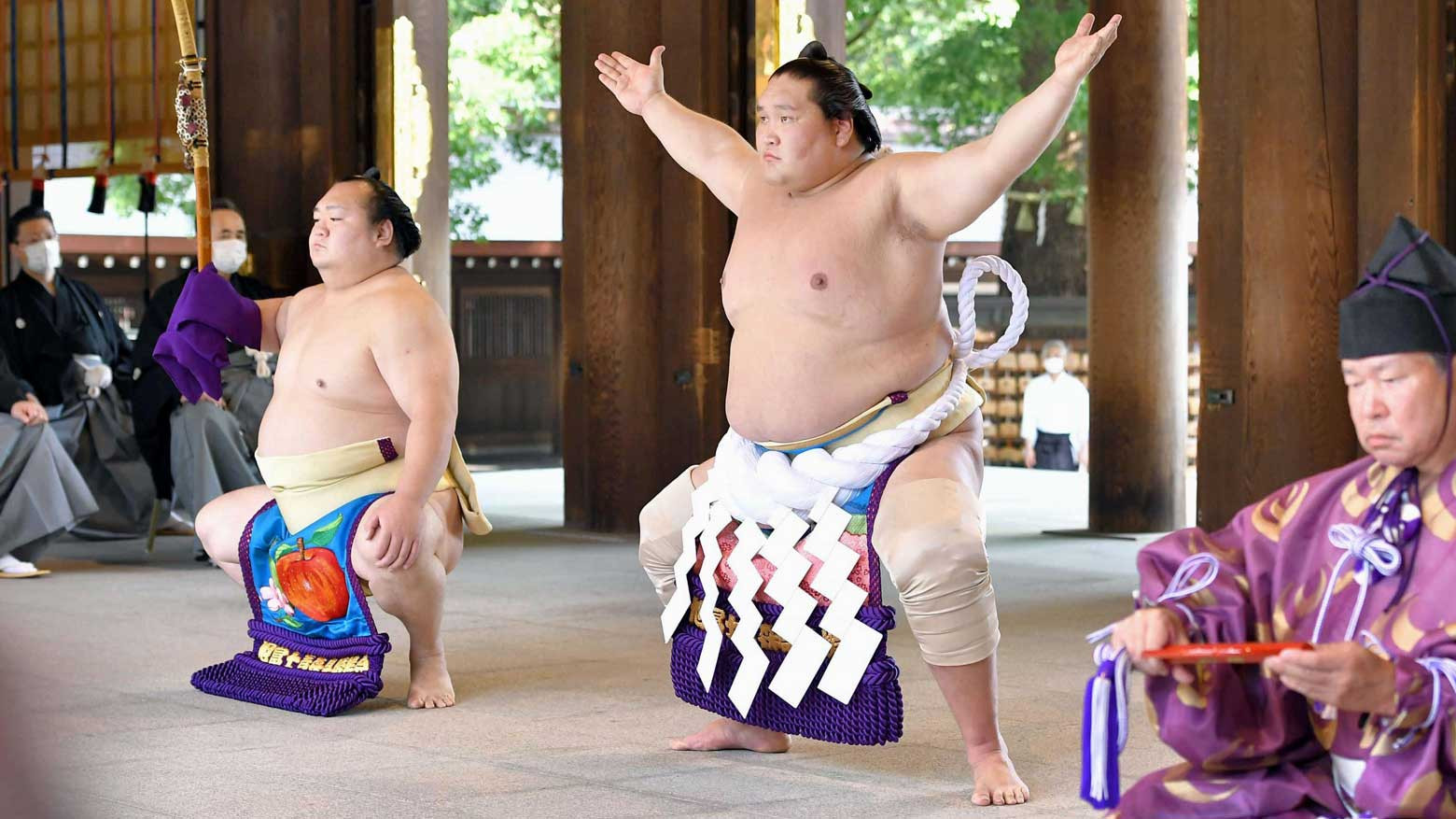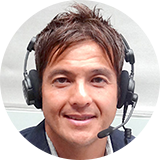Hakuho no show
Right before the September tournament started, sumo fans were given the very disappointing news that the winner of the previous tournament, Hakuho, would not be competing in the fall tourney because two of his stablemates tested positive for the coronavirus. The Sumo Association made the decision on the advice of experts on infectious diseases to keep all 18 wrestlers of the Miyagino stable, which includes Hakuho, out of the upcoming competition. This was a big blow to the September tournament, because everybody was hyped up to see another showdown between the reigning top dog, 45-time champ Hakuho, and the newly promoted yokozuna Terunofuji.
New yokozuna Terunofuji makes a statement
Back in the previous tournament in July Terunofuji failed to come away with the championship after losing to Hakuho on the final day, but his consistent and overwhelming performance over the past year enabled him to rise to the top rank. Terunofuji entered the September meet as the newly promoted 73rd yokozuna grand champion.
With Hakuho's absence, Terunofuji competed as the lone yokozuna.
The 29-year-old got off to an electric start by winning his first 8 matches in convincing fashion. But on Day 9, he was beaten by rank-and-filer Daieisho, handing him his first loss as a yokozuna. He got beat again on Day 12 by Meisei, but he could still enter the final day with sole possession of the lead at 12 wins and 2 losses. The other contender was Myogiryu who was trailing Terunofuji at 11 wins and 3 losses. On Day 15, Myogiryu fought first but lost his match. This enabled Terunofuji to clinch the championship even before he stepped into the ring. Terunofuji's opponent on the final day was ozeki champion Shodai. In the match, the new yokozuna had little trouble getting past the lethargic ozeki. It was the icing on the cake for Terunofuji as he finished the contest with 13 wins and 2 losses to earn his fifth top division championship.
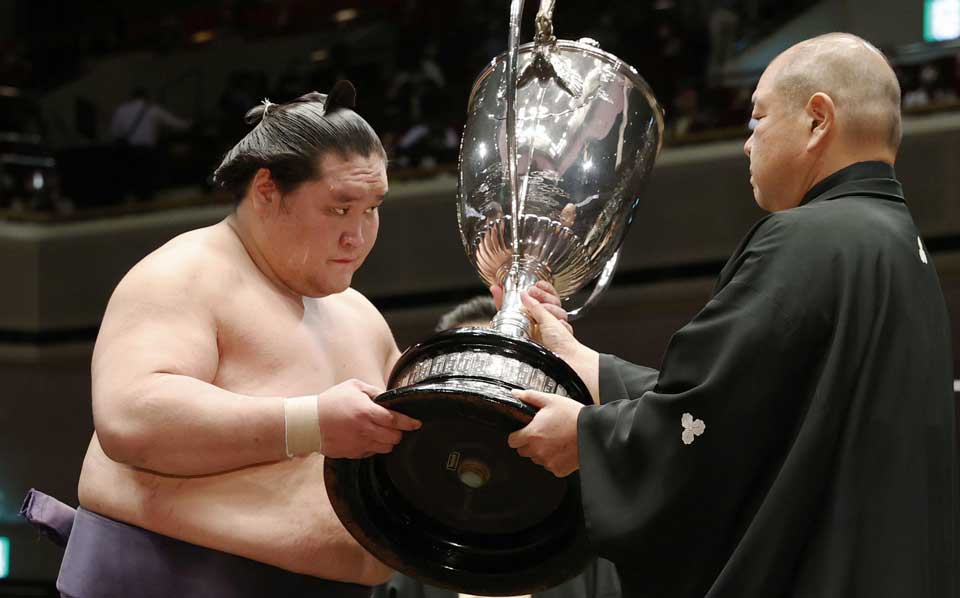
What's disappointing about all this is that Terunofuji and Myogiryu never squared off against each other during this tournament. The sumo association had a chance to create a head to head match up on Day 15 between those two top contenders, but it decided to go a more traditional way by slating yokozuna versus ozeki on the final day. I strongly believe this was a poor decision made by the association because a showdown between Terunofuji and Myogiryu with the championship on the line on the final day would've made things much more tantalizing and exciting. There is no doubt in my mind that Terunofuji vs Myogiryu was the way to go.
With the championship, Terunofuji became only the 9th newly promoted yokozuna in sumo history to win the tournament. The last man to accomplish the feat was Kisenosato in March, 2017. In an interview during the victory ceremony, Terunofuji said "I wanted to show sumo fans I'm working very hard in the ring because I think it's my job. I'll keep doing that with all my might."
I find myself running out of adjectives to describe what Terunofuji has been able to accomplish. He was demoted to the second-lowest jonidan division with knee injuries and other physical ailments in 2019. I'd say that if somebody was put into the same situation 9 out of 10 wrestlers would have quit. But this was not the case with Terunofuji. With the support of his stablemaster Isegahama, Terunofuji kept his faith and trained hard every single session to get where he is today. I can assure you that you will never see this type of Cinderella story again. So, my hat is off to Terunofuji for his perseverance and never-say-die attitude.
Special prize winners
There were two special prize winners this time.
The Outstanding Performance Award went to Daieisho for knocking out Terunofuji and giving him his first setback as a yokozuna. Daieisho is the winner of this year's January tournament. He finished the September competition with 10 wins and 5 losses. We expect the 27-year-old to keep making progress and perhaps he will be in the running for ozeki promotion in the near future.
The Technique Prize was won by Myogiryu. His strong and skillful forward charging offense almost gave him his first championship this time but he fell short in the end. It's his first special prize in 49 tournaments. The 34-year-old veteran says that receiving the prize gives him a huge confidence boost. Keep an eye on this veteran, because possibly the best is yet to come.
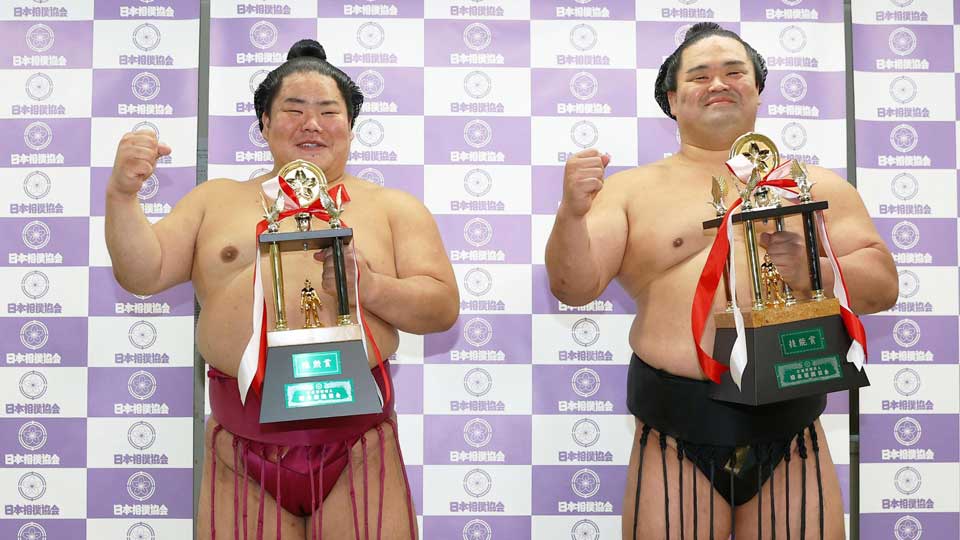
Hakuho announces retirement
After the completion of the September tournament the sumo world was rocked by the big news that yokozuna grand champion Hakuho was going to retire. And on September 30, the Japan Sumo Association's board of directors officially accepted his retirement and for him to remain in the sumo association by becoming a stablemaster, under the name Magaki.
Hakuho made the decision after struggling over a number of years with knee injuries. He said that in future competitions he would no longer be able to match the expectations that come with the rank of Yokozuna.
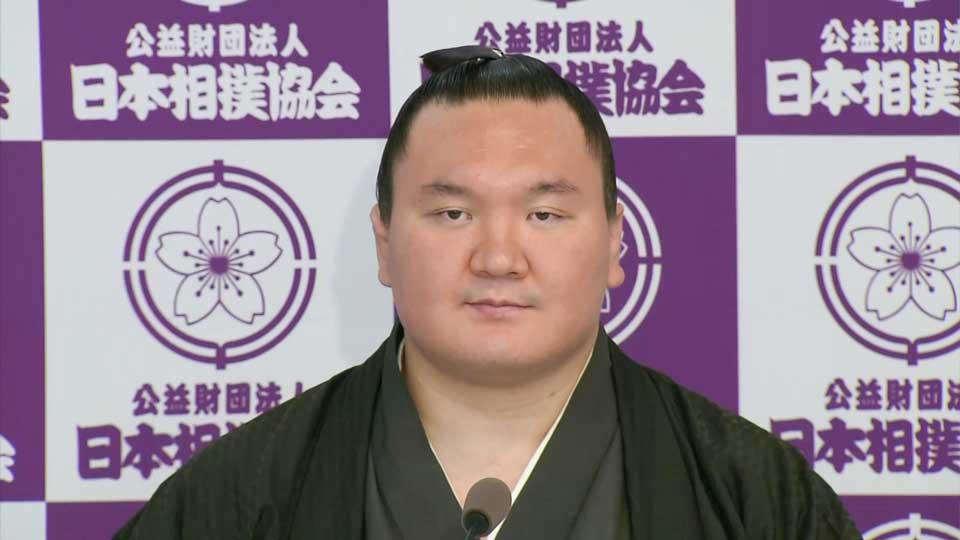
Was Hakuho's sudden retirement a surprise to yours truly? Yes, because he had just won the July tournament with a clean slate. Also, the primary reason for Hakuho to be missing in action in the September tournament was the COVID outbreak in his stable, so I thought his absence in that tourney would give him ample time to recover from old injuries. I thought he would be fully ready to go by the time the next tournament arrives in November.
On the other hand, when I heard him say that his physical condition had worsened after the July contest and that he would carefully think about what he'll do moving forward, I think he was almost hinting to us that he has no more juice left in the tank. And if you realize that this year's July tournament was the only time he was able to compete for the full 15 days of a grand tournament in the past year and a half, the clock was ticking for him to remain as an active sumo wrestler.
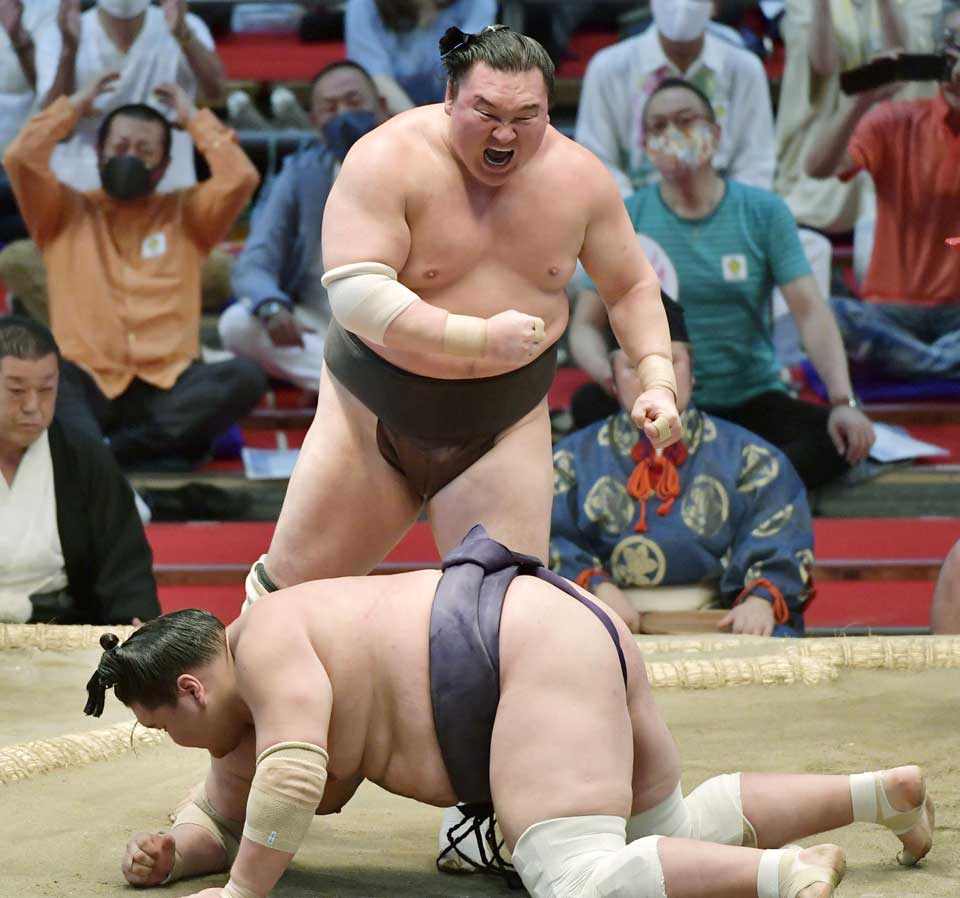
36-year-old Hakuho's retirement marks the end for one of the most decorated and successful yokozuna grand champions in history. He came to Japan at the age of 15 and made his pro debut in the 2001 March tournament. In the 2007 July tournament he became sumo's 69th yokozuna. He competed at the top rank for 14 years, which exceeds any other yokozuna by a wide margin. His legacy includes winning 45 top division championships, racking up 1,187 career victories and 1,093 top division victories, all of which rank first on the all-time list. In 2010, he won 63 consecutive matches which fell just 6 wins shy of tying the legendary yokozuna Futabayama's record of 69 consecutive wins. Hakuho says that because he had not broken Futabayama's record he was able to keep his motivation high and compete at the top rank for such a long time.
I've known Hakuho for nearly 20 years and one thing which stands out about him is that he is a hard worker. His diligence, determination and dedication to keep improving and getting stronger were second to none. He outworked everybody else. That's why he was able to compete at such a high level for so many years.
Despite his illustrious career as a professional sumo wrestler, time after time he faced criticism over how he won his bouts and also for his remarks, and many people have questioned Hakuho's dignity and class as yokozuna. He also received warnings about his absence from tournaments due to injury.
That's why the sumo association made a rare move this time to request Hakuho to sign a written oath before accepting him to remain in the association. The oath states that he must humbly listen and follow the instructions of his seniors and conduct his job faithfully.
It also says that he must uphold the rules and traditions of sumo and not act selfishly.
The thing is, for many years he was at the top of the totem pole of more than 600 active wrestlers, but once you retire you become just a rank-and-file member of the association. But all the special privileges that came with the rank of yokozuna are all gone now, and his sumo elders will treat him as a rookie employee… so he must be humble and abide by the rules.
Having said all of that, Hakuho is one of the most benevolent and compassionate people I've been around. He has often been seen reaching out to those in need of a help. One example is his continued support for northeastern Japan, which was hit by a massive tsunami and earthquake in 2011.
He also started an annual sumo competition for kids called the "Hakuho Cup" in 2010. The most recent competition in February 2020 drew 1,100 children from 13 countries. In my eyes, Hakuho has been the biggest ambassador for sumo throughout these years and more than anybody he knows the importance of promoting sumo to younger generations so that they can learn how fascinating and exciting the sport is. It just shows that Hakuho truly loves sumo from the bottom of his heart and he's always thinking about the well-being of the sport.
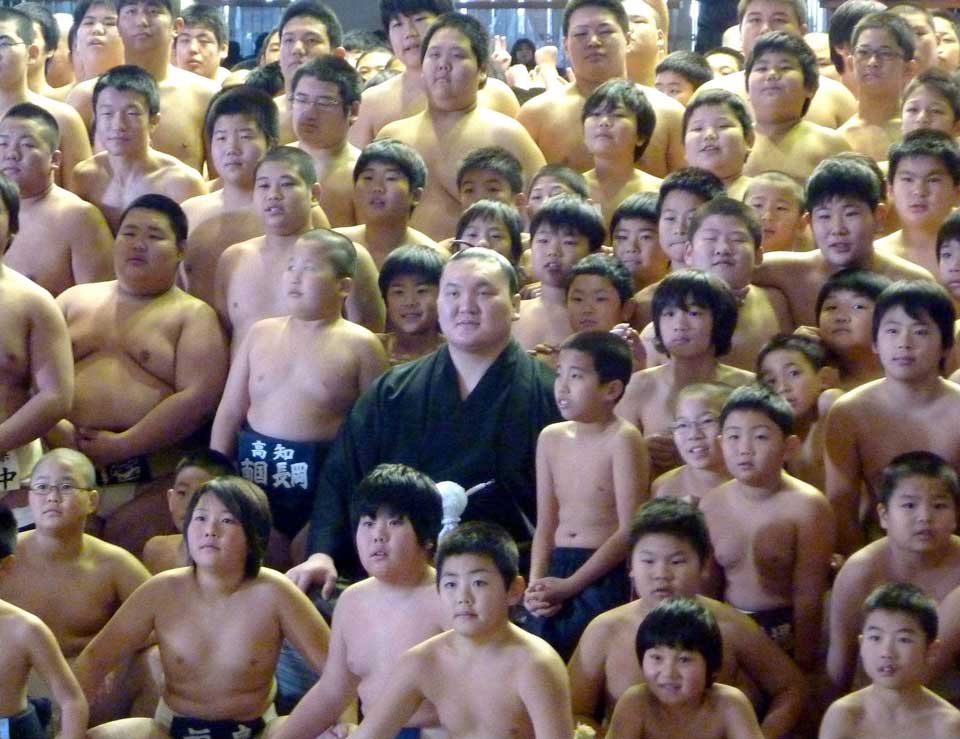
In my experience, Hakuho is one of the most generous and nicest people I've ever met. He might be a yokozuna, but he's a very humble gentleman who treats everybody exactly the same way.
Yes, there are a lot of critics out there for some of his un-yokozuna like behavior, but to me Hakuho's gracious activities to help people and promote sumo the right way far outweigh any negative sentiments surrounding him. For that reason, I truly believe it's great to have him continue working for sumo after his retirement as a wrestler.
Hakuho acquired Japanese citizenship in 2019, a prerequisite to becoming a coach and eventually opening his own sumo stable. Needless to say that he was a superstar in the ring and because of his sincere and humble personality, I think he will be able to recruit many promising wrestlers and develop them into sumo stars just like himself. I really think the future is bright for Hakuho as a coach and as a stablemaster.
Thank you Hakuho for all your contributions and wish you nothing but the best as an oyakata stablemaster.
Where does sumo go from here?
With Hakuho now gone, what can we expect to see in future competitions? Well, one thing's for certain. That's the continued dominance of yokozuna Terunofuji -- providing he stays healthy. The question is, who can challenge the new top dog? From what I've seen recently, the answer is no one. The two ozeki -- Shodai and Takakeisho -- both lack consistency and are barely hanging on to their rank. Mitakeumi and Takayasu whose names come up as possible contenders in about every tournament have turned out to be perennial underachievers. So, among the upper echelons I can't find anyone coming close to being a serious threat to Terunofuji.
What we can expect, however, is continued improvements from up-and-coming wrestlers such as Daieisho, Meisei, Hoshoryu, Wakatakakage and Kiribayama. All of them are hungry for success and work extremely hard and they could give new life to the ring, which feels a little empty right now with Hakuho's departure. I think the next ozeki will emerge from among these wrestlers, so keep your eye on them.
The next competition is the final grand tournament of the year. The November tournament gets underway in Fukuoka on November 14.
